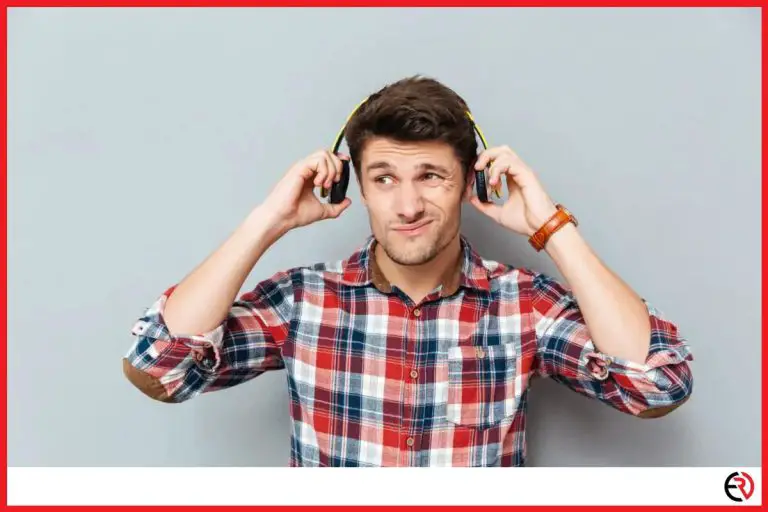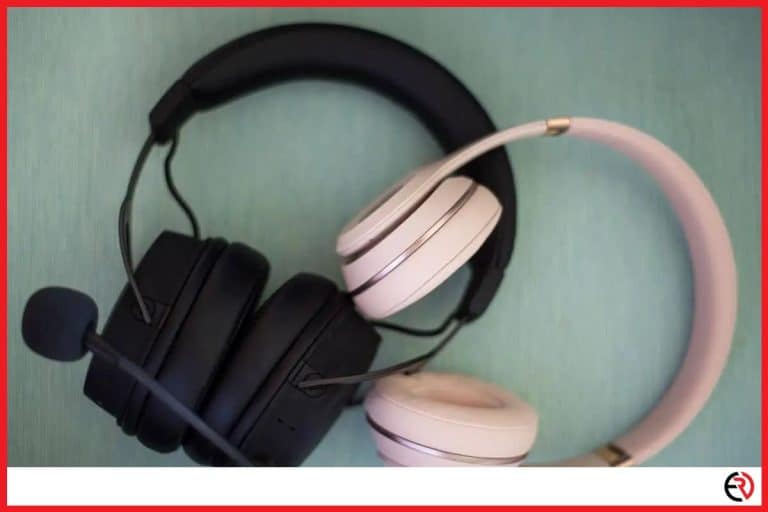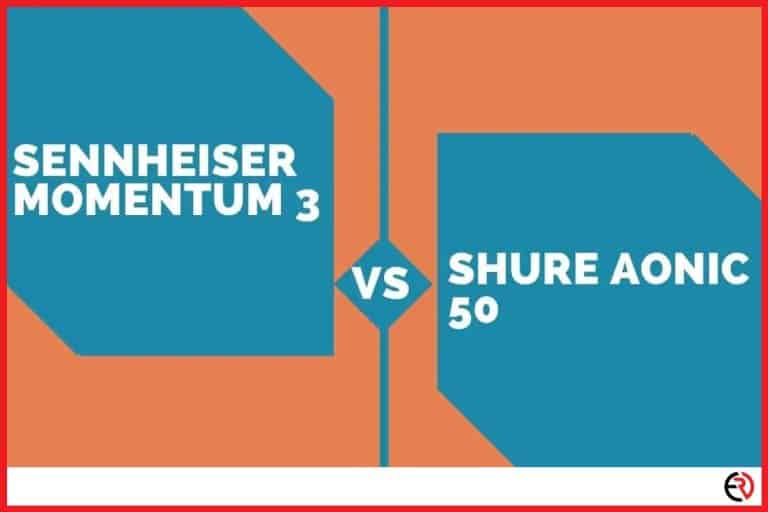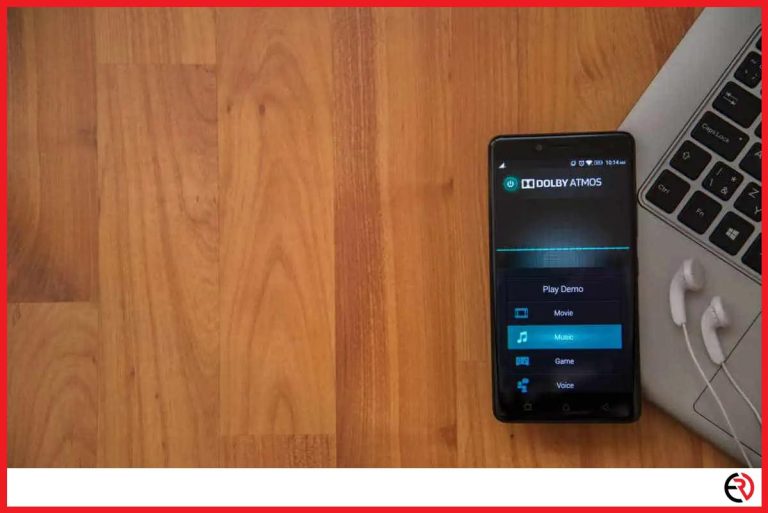What specs to look for when buying new headphones?
This post may contain affiliate links which means that, if you choose to make a purchase, I may earn a small commission at no extra cost to you.
While browsing the internet stores for a new pair of headphones, you will most likely find a section about specs. But what do all the headphones specifications mean? Which is important?
Some specs you should look for when buying new headphones are:
- Headphone type (in-ear, over-ear, closed-back, wireless, etc)
- Wearing style
- Battery life
- Cabel length
- Driver size
- Frequency Response
- Impedance
- Sensitivity
- Total harmonic distortion
I would recommend you to read this article thoroughly and understand each spec so that you are able to buy the headphone for yourself and enjoy the quality of sound!
Headphone Type
First and foremost, it is important that you decide what type of headphone you want to buy. It is because headphones come in a wide range of forms, kinds, shapes, and degrees of performance. Therefore, for an informed decision about your purchase, you must know about the different types of headphones available on the market.
Closed-Back Headphones
These headphones are fully sealed around the back. Close-back headphones allow sound out only where it can reach the user’s ear. These headphones block out the outside noise. Audio Technica ATH-M50x and Edifier H840 Over-Ear are the best closed-back headphones.
Open-Back Headphones
These headphones allow the passing of air through the ear cups to the speaker element, which means there is no pressure to affect your sound. At the same time, you won’t feel any echoes inside your headphones. Check out the best open-back headphones – i.e. Shure SRH1840 and Philips Fidelio X1.
On-Ear Headphones
These headphones work to focus directly on the sound into the ear canal. On-ear headphones have smaller ear cups, which rest on the ears but have also slightly less bass. Experts say that it is a less “natural” way or method to hear stereo sound. Thanks to their smaller size, you can easily take these headphones with you. Also, you will not suffer from burning ears. Check out beyerdynamic aventho wireless.
Over-Ear Headphones
Typically, these headphones have large ear cups and thick headbands, which fully encompass the ears. If you want a comfortable fit, you should buy over-ear headphones like Sennheiser PXC 550 Wireless.
In-Ear Headphones
In-ear headphones are also known as earbuds. These are ultra-portable headphones that rest on the edge of your ear canal. If you want an ultra-portable design with comfort, in-ear headphones like Cambridge Audio Melomania are the best.
Bluetooth Headphones
Bluetooth headphones are cordless. They provide a two-way connection to your smartphone via Bluetooth technology. Some Bluetooth headphones like AKG Y50BT are capable of connecting to multiple devices simultaneously. This will enable you to listen to music or talk on the phone without the hassle of cords or wires.
Wearing style
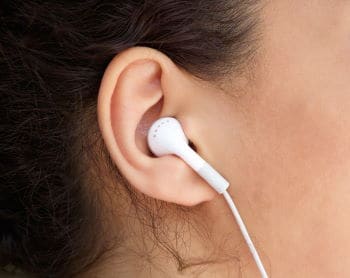
The second most important thing to consider while choosing to buy a new headphone is the “wearing style.” We have already given you an overview of it in the previous section.
Over-ear headphones are also known as “full-size” or “around-ear” headphones. These headphones have cushioned ear cups, which enclose your ears. If you want to isolate yourself from the outside sound, these headphones will do the best job for you. They come with a sophisticated feature known as “Passive Noise Reduction.”
It depends on the user how he or she wears the headphones. For instance, on-ear headphones are quite similar in design to over-ear headphone models – but, the cushions sit do not enclose your ears, rather they sit on your outer year.
On the other hand, open-ear headphones have a wraparound headband, which rests comfortably outside your ear – i.e. on your cheekbones. Moreover, in-ear monitors – also called IEMs – are headphones, which fit snugly inside your ear canal.
Furthermore, behind-the-neck headphones are a popular wearing style these days. These types of headphones feature a support band, which you can wrap around the back of your neck like a collar.
Battery life
When it comes to the battery life of headphones, you need to understand three different concepts, which are charging time, talk time, and standby time.
Charging time is the amount of time your headphone will take to fully charge. Talk time is the amount of time you can have a conversation or talking until the battery dies. Stand-by time means a fully charged headphone will stay on without being used.
Battery life for Bluetooth Headphones
You must know that stand-by time and talk times can vary widely. Depending on the usage, you need to look for headphones that come with a minimum of 4-5 hours of talk time. At the same time, the standby time must range from 1-2 weeks.
It is better to measure “talk time” than standby time. There are some brands that come with a listening time where the battery power consumption is relatively less due to non-usage of the microphone.
Battery Management
Experts recommend picking a headphone that comes with a standard micro-USB charging port, which allows charging anywhere your mobile phone charger. It is important to plan your battery usage. If you have long conversations most often, you definitely don’t want the battery dying on halfway.
Battery life for Wireless Headphones
While some wireless headphones require charging, others need AA/AAA batteries. Experts say that this is a better and convenient option. When you buy a wireless headphone with chargeable batteries, you actually have an operation time of up to 20 hours. Wireless headphones are primarily used for listening purposes. Therefore, these types of headphones can stay on for longer.
Sony WH-1000XM3 Headphones have awesome battery life for long trips. With the noise cancellation feature “ON,” the battery life is 30 hours and with this feature “OFF,” the battery life is 38 hours. Similarly, these are the best headphones available on the market when it comes to battery life. Sony WH-1000XM3 has a quick charge battery – i.e. 10 minutes charge and 5 hours playback.
Cable Length
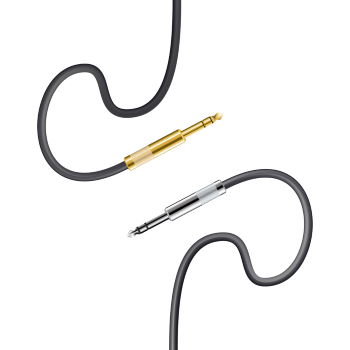
It is great to have the right power but getting it to the drivers is a whole different thing. We all know that different metals have different degrees of strength to conduct power. So, the connection between the device and the headphone depends on the conductor.
Most headphones come with copper cord or cable, which works well but not for long. Therefore, it is better to look for headphones that use the Oxygen-Free Copper Clad Aluminum cord, which enhances the overall sound clarity.
In addition, the standard length of any headphone cable is 1.2 meters or 3.9 feet. In general, headphones for DJs and sports are longer. The purpose is to increase mobility.
There are some headphones in which the manufacturers provide cord extensions of 2-3 meters, which is inconvenient for some users. However, if you want to watch programs on TV, you can use such headphones.
When it comes to preferences for cable length, it can vary for active users. For instance, it depends on where you prefer to keep your audio playing device. If you want to keep the device in your pants pocket or in a backpack, you would need headphones with a longer cable.
Driver Size
The driver is considered one of the most important units in headphones. It is an essential component that works to convert electrical signals into sound. Simply put, it creates the sound you hear. You can think of them as small loudspeakers inside your ears.
The driver consists of three important components such as a magnet, voice coils, and a diaphragm. The magnet in the driver unit creates a magnetic field. The voice coils have the capability to move the diaphragm in order to create the sound when electric currents pass through them. Similarly, the function of the diaphragm is to vibrate and create sound waves.
A headphone driver is a disc-shaped component. Its size varies and depends on the required sound output. In addition, when you choose headphones with a larger driver, you will have better bass. However, it is important to bear in mind that headphones with larger drivers can produce better sound than headphones with smaller drivers.
Typically, there are different factors to take into account when it comes to the sound quality of the headphones. Usually, a headphone driver is in the range of 20-50 millimeters in diameter. The size of the driver – in general – determines the headphones’ loudness.
Many people believe that a larger driver can produce better sound. However, this is not entirely true. On the other hand, it is also true that a larger diaphragm can produce a bit of cleaner bass. Types of headphones drivers are:
Dynamic Drivers
If you want the headphones to deliver a thick bass punch, then you should choose the one that comes with dynamic drivers. A lot of models use dynamic drivers and they usually have a larger diaphragm. Dynamic drivers don’t consume much power and attain good sound pressure in order to deliver powerful bass.
Planar Magnetic Drivers
Planar Magnetic drivers come in high-end headphones. This technology actually sandwiches the diaphragm between magnets. Audeze LCD-3 is a high-end headphone that produces clean and accurate sound – giving the user every bit of detail. These headphones don’t add sound effects or modifications – yet produce high-quality sound.
Balanced Armature Drivers
Balanced armature drivers are usually smaller in size. They are mostly used in in-ear monitors. Many people ask me how it is possible for a tiny driver to displace more air. Well, the simple answer to this question is that manufactures install multiple balanced armature drivers in a single earpiece – probably 2-4 drivers. This allows the headphones to reproduce varying frequencies with reduced or minimal distortions. These drivers are mostly common in in-ear headphones and earbuds.
Electrostatic Drivers
Electrostatic drivers are quite expensive. They use diaphragms, which are charged electrostatically. These drivers are capable of producing exceptional sound quality with awesome and breathtaking accuracy. It is important to keep in mind that these drivers have a hefty price tag. You will only find these types of drivers in premium headphones.
This video has a great and quick explanation of the different headphone drivers.
Frequency Response
Do you know Frequency Response? It is the range of treble, mids, and bass. For example, 20-20000 Hz, the first number refers to the bass end while the second number shows the treble end of the spectrum. In general, the acceptable audible frequency range is 20 to 20,000 Hz.
Bass refers to the low-end spectrum of frequency response. It ranges from 20-250 Hz. Bass is the heavy and deep tones in the music – for instance, kick drums, low rumbles, and bass instruments. A well-balanced bass is important for the optimal production of sound. However, it solely depends on your listening taste.
If the headphone manufacturer lists the specification like 15 to 28,000 Hz i.e. -3dB, this is much more useful than 15 to 28,000 Hz without the dB. In addition, if your headphone specification includes higher frequencies such as 23,000 Hz, this is a good sign. Such a headphone will sound much clearer than those with 18,000 Hz spec.
Sony ZX Series Wired On-Ear Headphones have a great Frequency Response. Enjoy full and rich frequency response driver of 30-millimeter driver units that deliver balanced sound for a full listening experience from 12 to 22,000 Hz.
Impedance
Sound experts often use impedance as a specification, which is measured in Ohms for both earphones and headphones. Impendence describes the amount of resistance a headphone gives to signals from an audio source.
Therefore, any headphone models with impendence ranging from 20 to 40 Ohms is an optimal choice for a regular music listener. Depending on the audio source, the impedance of over 64 Ohms is best for audiophiliac listeners.
Headphones with 25 ohms or higher demand more power to produce higher audio levels. So, they are protected from the damages caused by overloading. You can also use them for a wide range of audio equipment.
High impedance headphones are less sensitive – for instance, they sound quieter and use the built-in amplifier of the audio device – and require much more power to drive.
Important note: High impedance headphones often need an external headphone amplifier. Without it, the headphone might not sound as good. Check out this article for more detailed information.
Sound experts argue that the higher impedance headphone models sound clearer and more transparent. The bass definition is likewise better. Meze Audio 99 Classics is a high-end headphone with a high impedance of 32 Ohms that gives an excellent listening experience to the user.
Check out this Youtube video for a more in-depth explanation about headphone impedance:
Sensitivity
The sensitivity of headphones is the measurement of loudness at a given power level. For instance, if one headphone has higher sensitivity than another headphone at one milli-watt power level, then the audio produced by the first one will be louder at that volume. In general, it is considered louder.
A headphone with higher sensitivity has a better driver performance and it does not use a lot of power. At the same time, you must bear in mind that you may feel distortion at higher volumes. This can damage your headphones and ears.
In contrast, lower sensitivity headphones require more power but are considered a more durable option than higher sensitivity headphones. They won’t damage the driver unit irrespective of the high amount of power they need.
Therefore, it is important to pair lower sensitivity headphones with high power suppliers or devices in order to get good output sound quality. On average, the sensitivity for headphones is 104 dB – for instance, Sony MDR7506.
Total harmonic distortion
When you play your headphones at higher volumes, the diaphragm of the driver may not function properly or at a fast pace as required. This will lead to sound distortion, cracking noise, or disturbance – affecting the quality of music, sound, or audio file. The lower the total harmonic distortion (THD), the better.
Headphones that come with a higher percentage of THD can easily produce distortions. Therefore, it is important to look for headphones with low THD levels. Headphones like Sennheiser HD 650 have lower THD levels of 0.05%.
Conclusion
When you opt to buy new headphones, there are a number of specs that you need to check – as explained above – in order to get the best quality model. You must also remember that you get what you pay for.
So, properly look for all the specs, investigate the range of frequency, the frequency response and look for impedance on the desired headphones. At the same time, test the headphones for all these specs.
Moreover, the form, comfort, and size of the headphones are also important specs that you should take into account. We recommend you to check controls and the pairing features of the headphones as well. Lastly, price is the most important thing. You must look for headphones that have the best features and that comes with an affordable price.
Don’t forget to check the headphones mentioned in this article. They are tested for the respective specs and chosen for their excellent performance, high-quality sound, better frequency response, low THD, etc. Good Luck!


